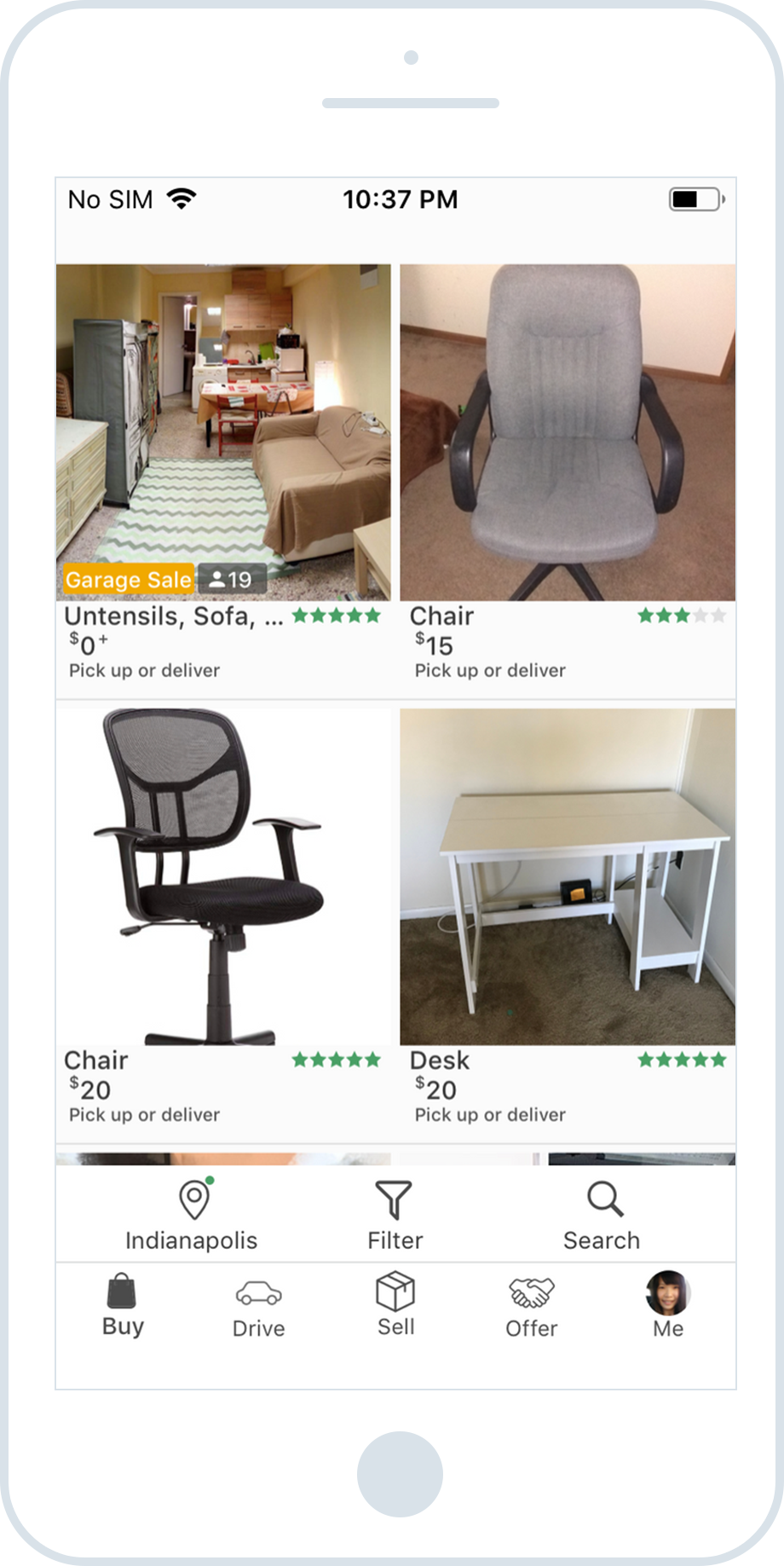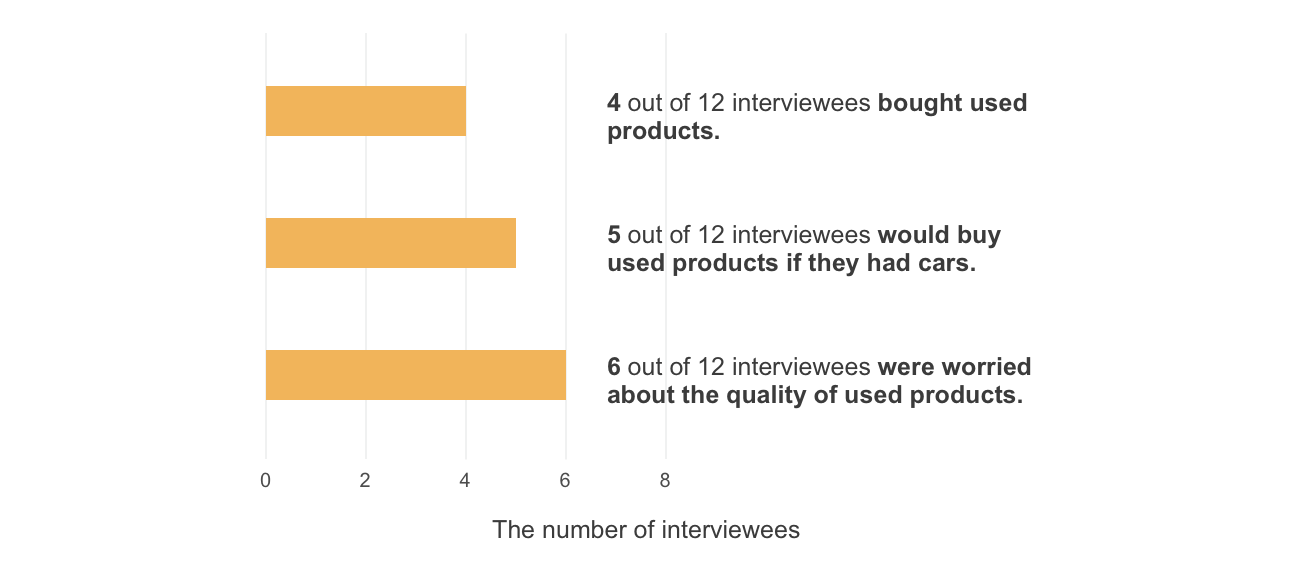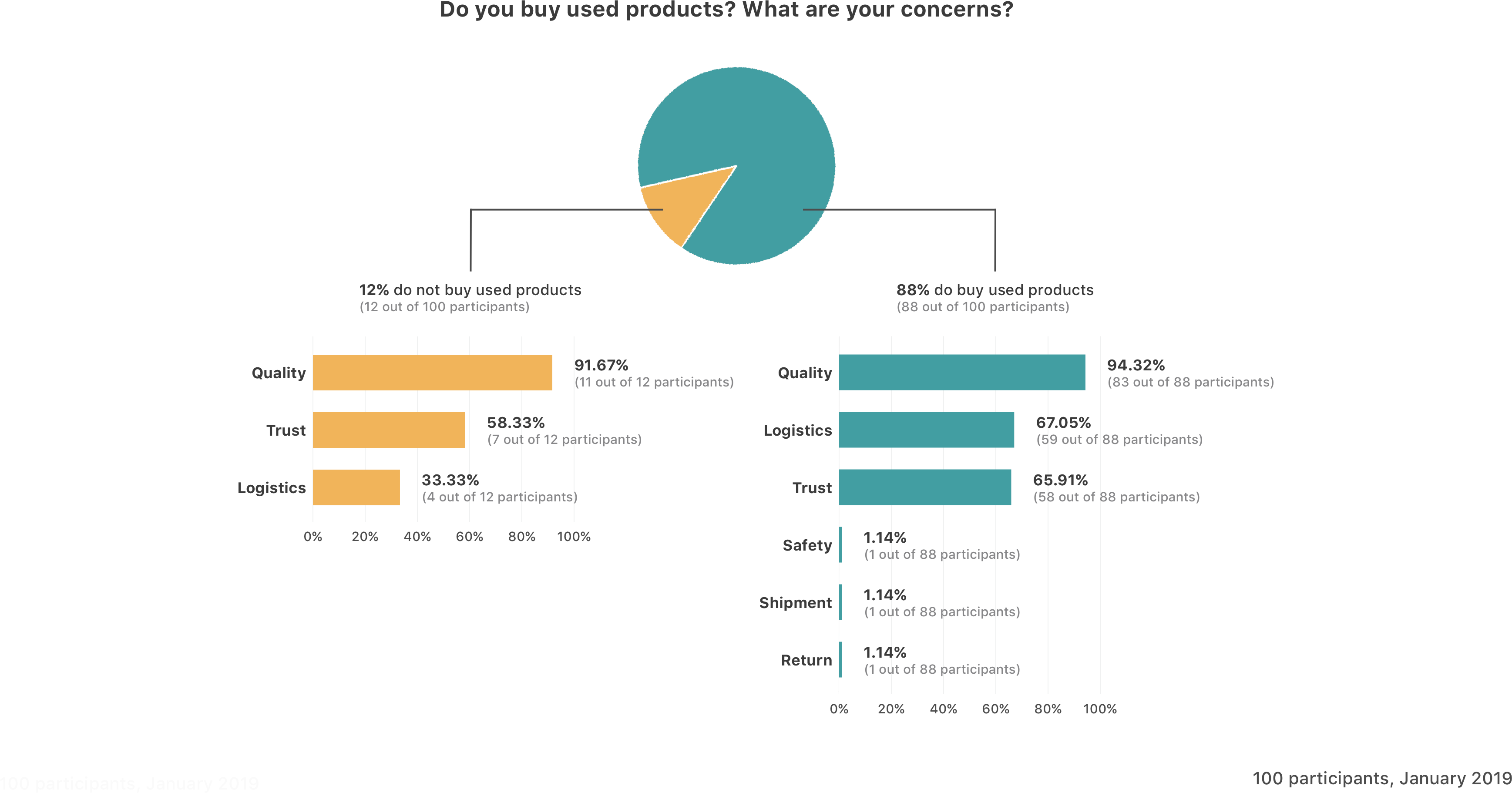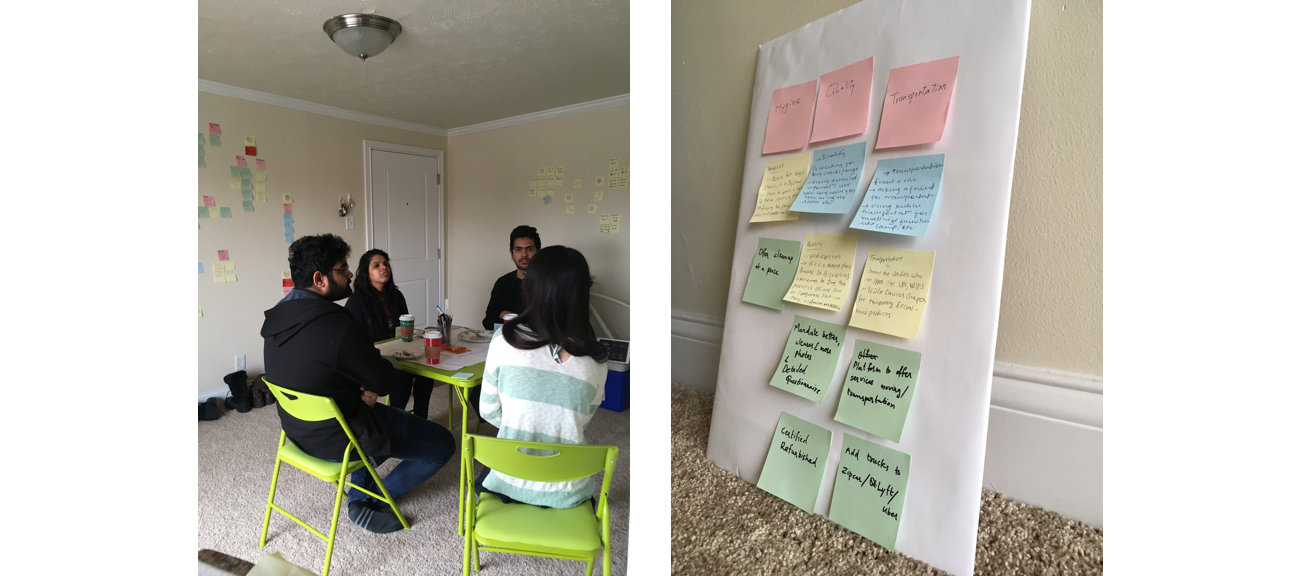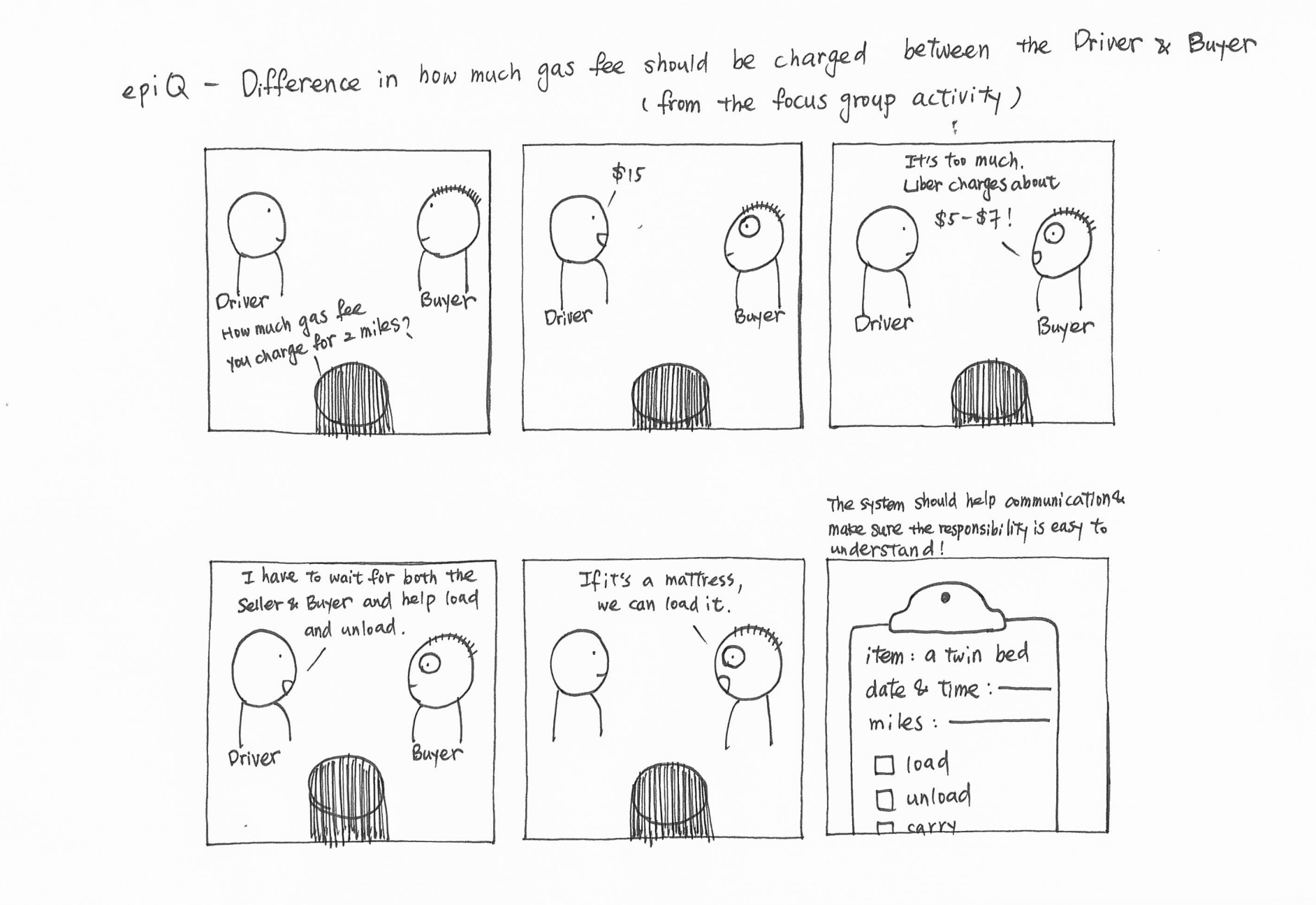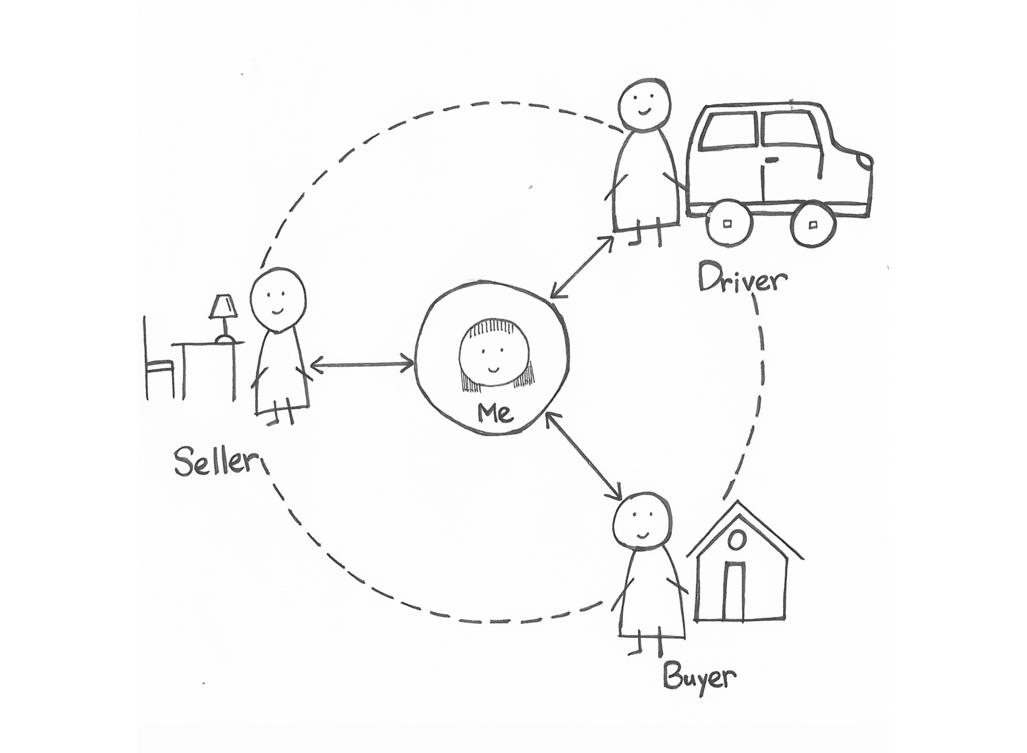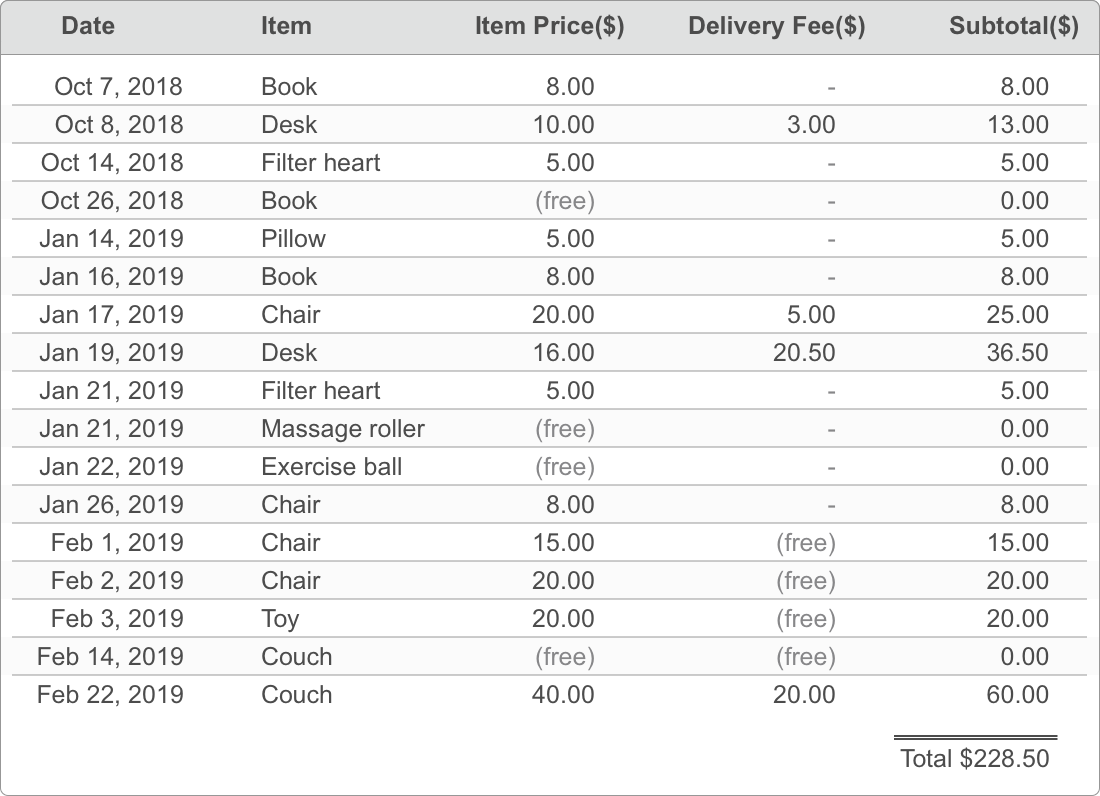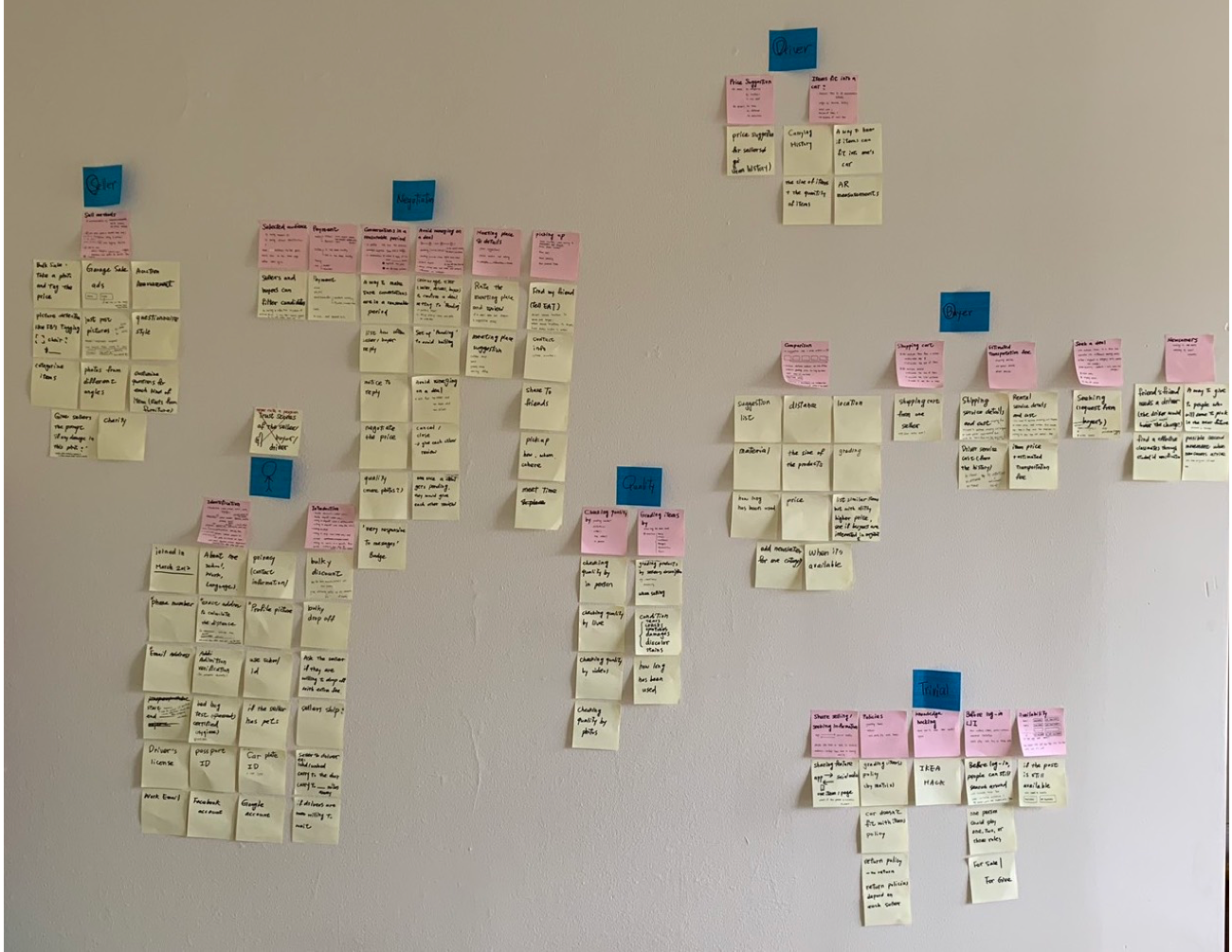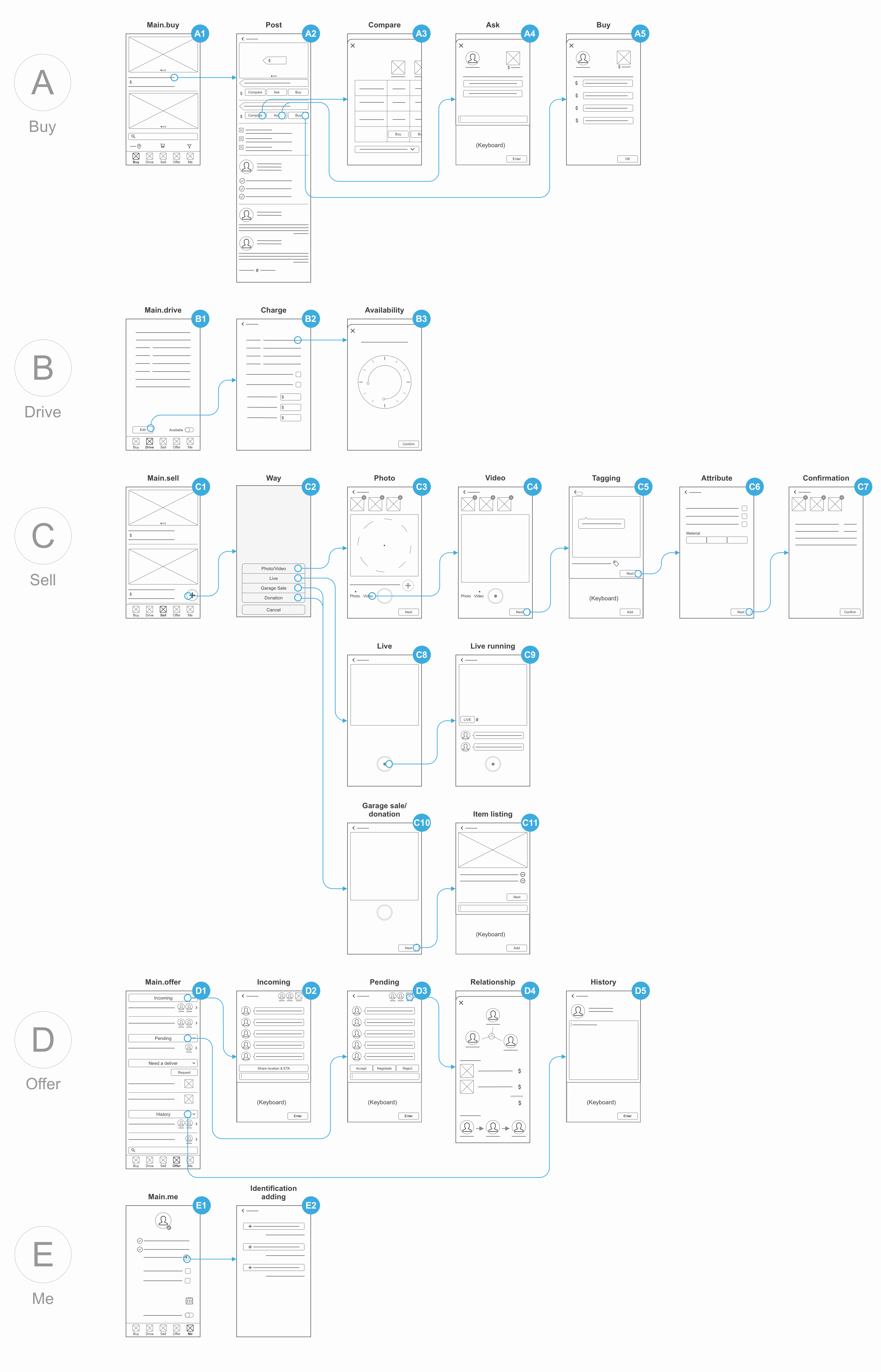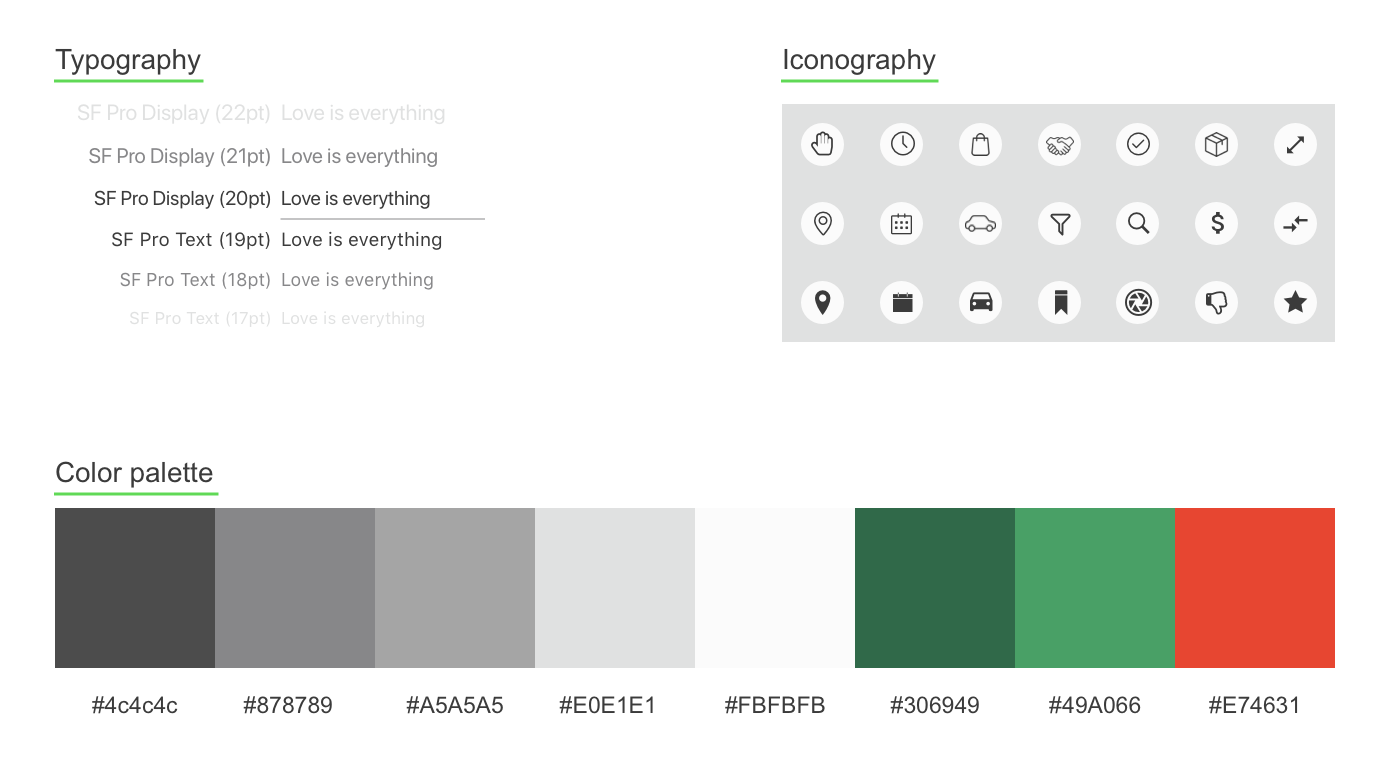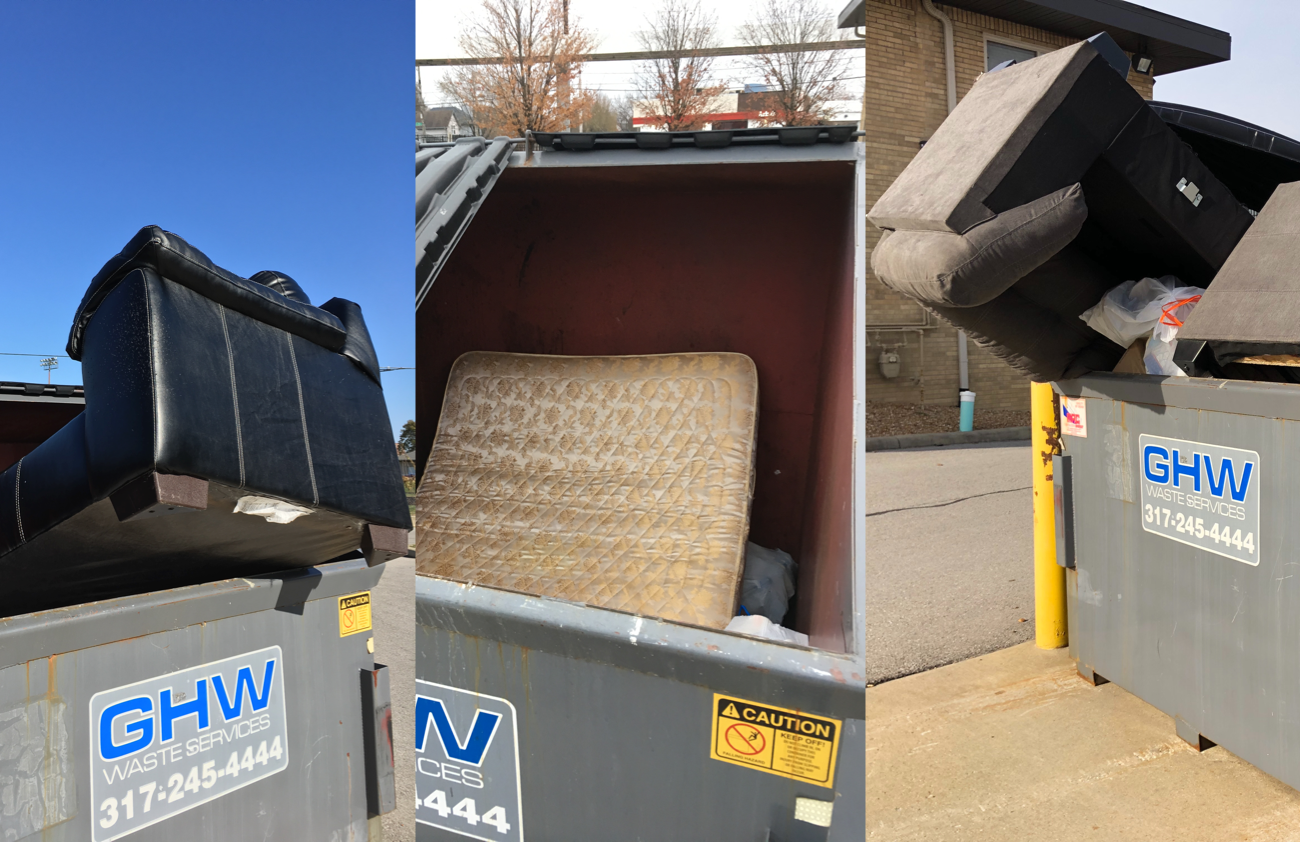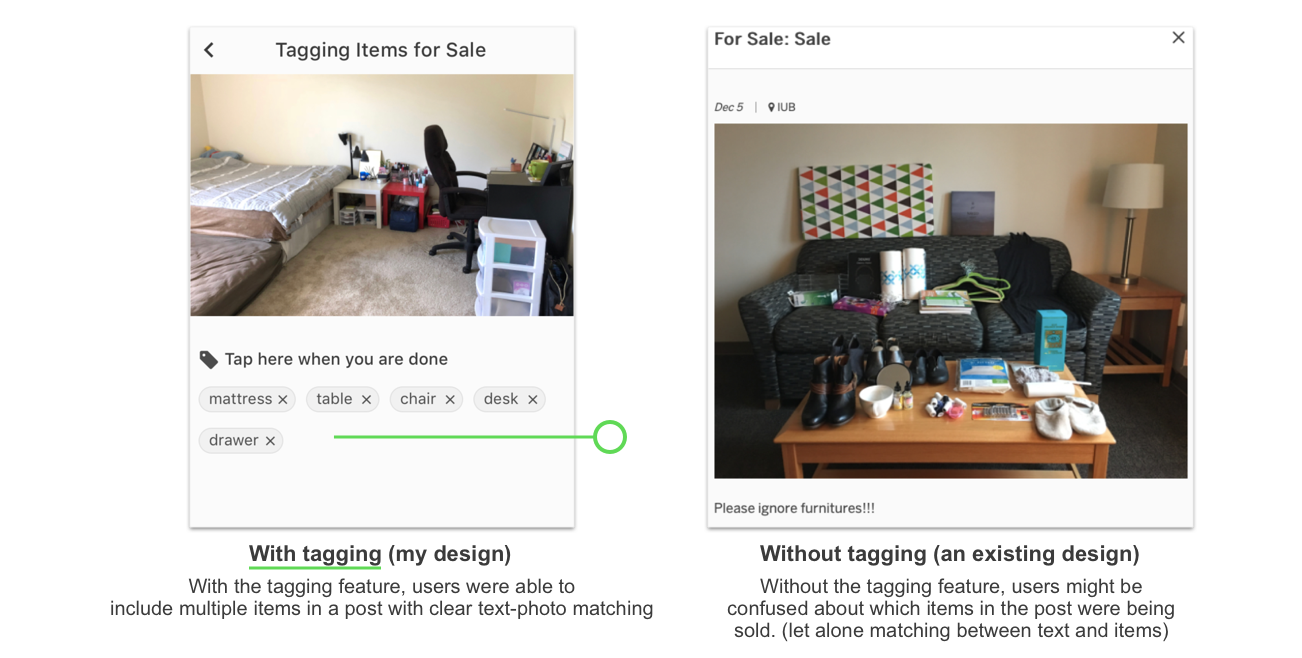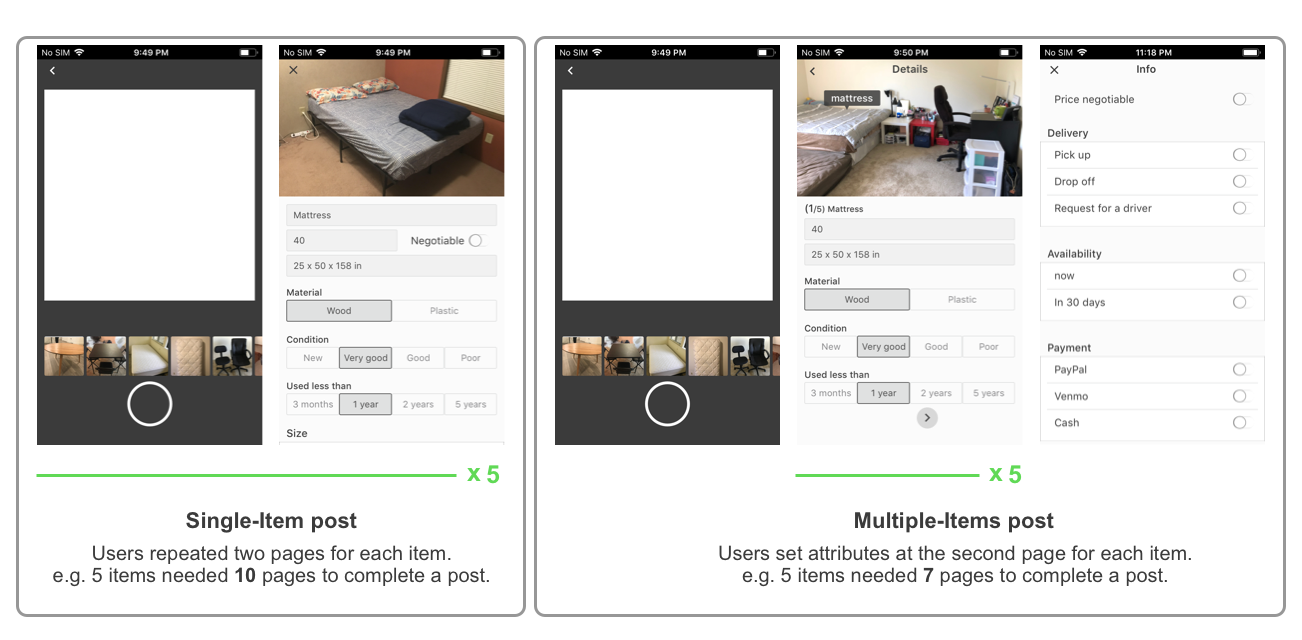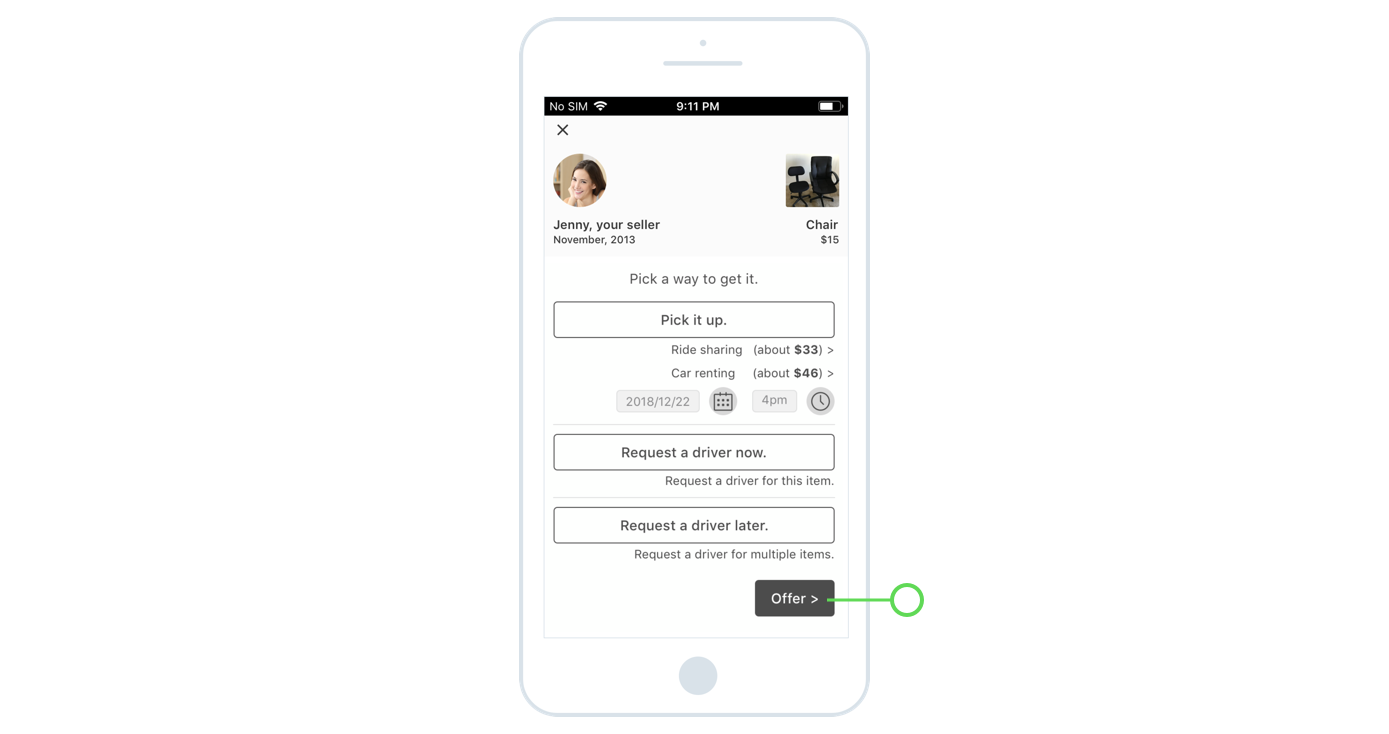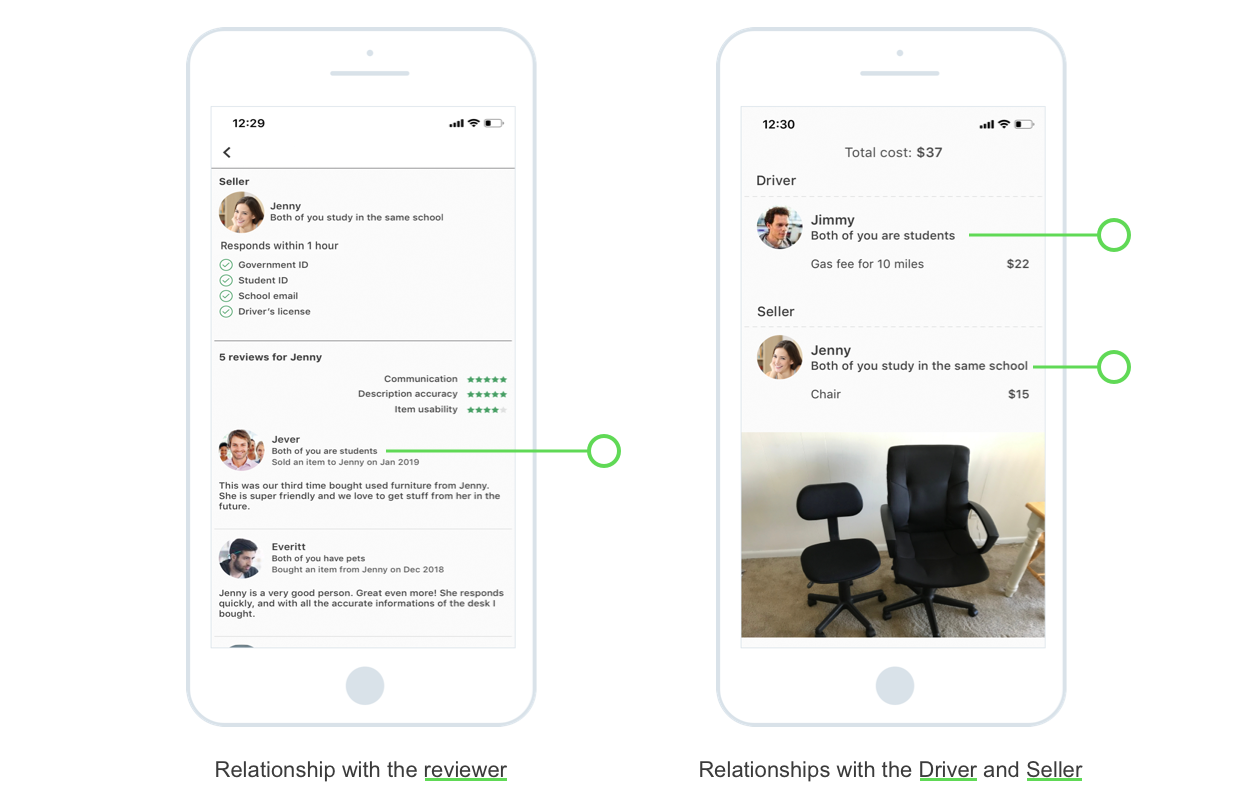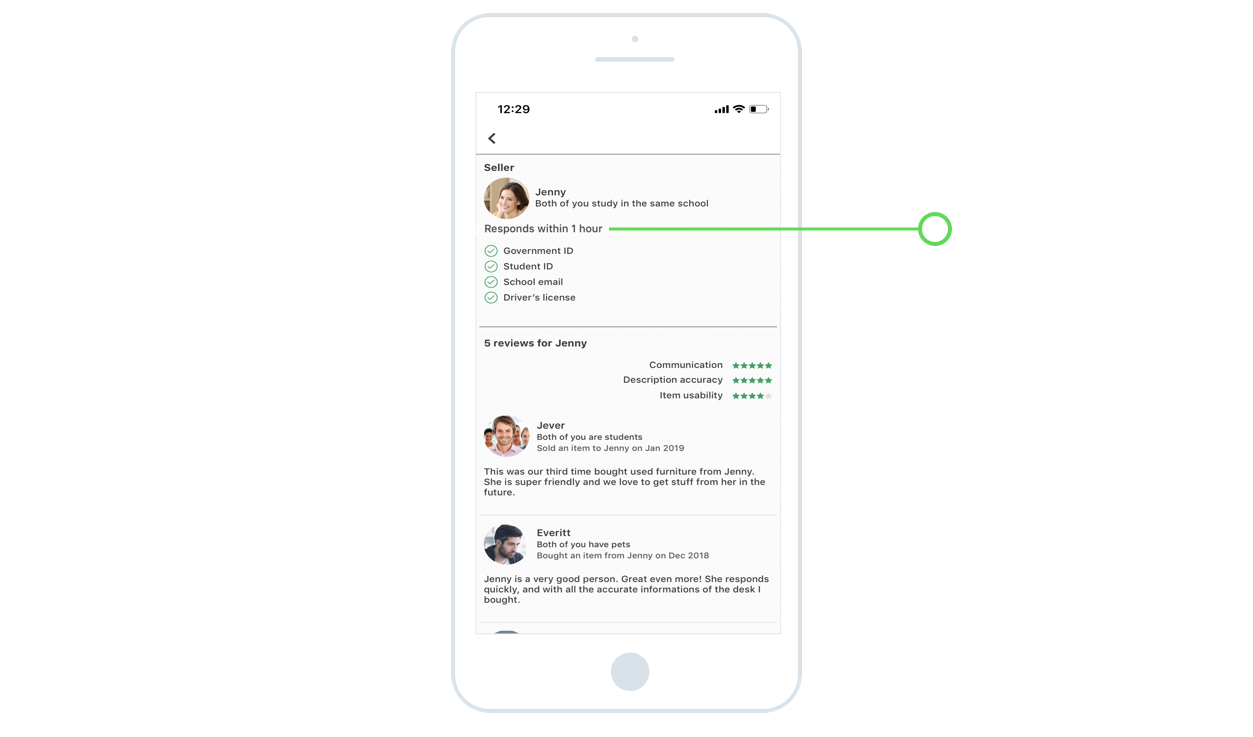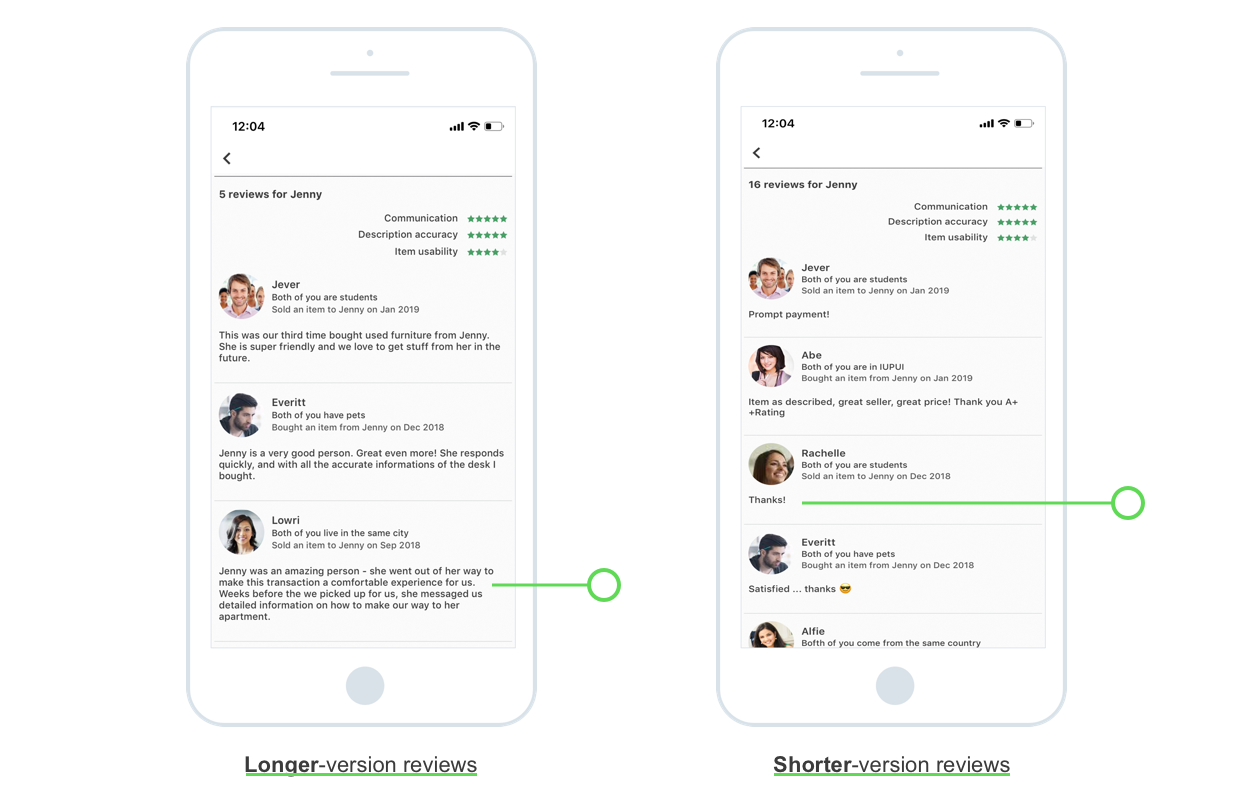Problem
This side project started from a casual conversation with my roommate. She wanted to buy used furniture on a classified website. However, having no car and no friends with cars that could help her, she quickly dropped the idea.
In order to validate that selling and buying furniture was indeed a real problem for students, I interviewed:
- 12 freshmen students
- 3 students who were about to graduate
- 4 recent alumni
With limited budgets, students, I interviewed, preferred having used furniture. However, quality and logistics were two main concerns from the buyer’s viewpoint.
On the other side, people had trouble with selling (or giving away) furniture. For example, the fear of allowing strangers to check items at home and the disappearance of buyers after accepting deals.
Survey
From interviews, I got many problems in used markets among students. What problems should I focus on?
In order to get feedback broadly and prioritize problems, I conducted an online survey and collected 100 responses from current students across the nation. The result showed that, for people who chose to buy (or not to buy) used products, their top three concerns were: quality, trust, and logistics.
Thus, I decided on focusing on these three problems.
Focus Group
In current used markets, there were two roles: Buyer and Seller. The logistics was something missed in between. Are people willing to help fill the gap?
Thus, I came up with a business mode of a three-sided marketplace: Buyer, Seller, and Delivery Partner.
In order to test the concept of adding Delivery Partners to solve the logistics problem, I recruited three students, playing one role for each, into a focus group activity. The person, who played the role of Delivery Partner, was willing to help deliver furniture with his car (both in this activity and the real life).
While observing their interactions, I found that the difference between roles was the most critical insight. For example,
- The Buyer needed more item details to make decisions, but the Seller expressed it’s discouraging if it needed a lot of effort to describe an item.
- The Delivery Partner could help move a mattress for a $15 gas fee, but the Buyer didn’t agree with the price. (as seen in the sketch below)
Observation
I observed the interactions by matching Buyers, Sellers, and Delivery Partners. Thus, I could not only see challenges and opportunities for innovations, but also validate if the business model of the three-sided used marketplace worked in the real world.
From the $228.50 transactions I matched (as seen the transaction history below), it proved that the need of having a platform to make people connections happen. For example, people were willing to help deliver furniture for free or for a very small gas fee.
Design Decision
How can technology help students settle down within their budgets?
Using post-it notes to collect and arrange ideas by:
- Discussing with friends - a website or a mobile app was the best option because students already had these devices.
- Referring to a research report of Gfk: millennials used smartphones (73%) for shopping online more than desktops (59%) or tablets (35%) in the US.
Thus, I chose to design a mobile app.
Wireframe
I sketched out wireframes and their interactions on papers, which allowed me to discuss it with a senior student and to iterate on the design quickly.
Low-Fidelity Prototype
I moved the critical screens from papers into the digital format to make sure no major usability issues before going into building high-fidelity prototypes.
Design
The black-and-white palette was used throughout the design to keep the focus on the content and to have better readability and accessibility (as seen in the color palette below). Moreover, the color contrast was at least 4.5:1 by following WCAG 2.1 AA.
First-Round Iteration
This round focused on the quality verification of used products and basic features: selling and buying. Students, who I talked to, sold furniture when they were about to graduate, and the amount of items was usually a lot. Dumping furniture happened due to the time limits.
In order to encourage students to sell (or give away) their furniture with minimal clicks, I designed a tagging feature for multiple-items posts. The existing solutions were a little difficult to know, for example, which products were sold and the price. (as seen the photo on the right below: a post on my school's classified website)
In my design, for Buyers, it was clear to match items in the picture and description (as seen the video on the left below); For Sellers, it saved the time from posting an item at a time (as seen the video on the right below).
How did it save time by posting multiple items in a post? It reduced the amount of photo-taking and data entry.
In the first round of usability testing, four participants, who had experience of shopping online, tried the buying and selling features.
From participants' opinions: the multiple-items post was better when Sellers wanted to save time. However, the single-item post was promising when Sellers wanted to pay more attention to higher-price items by having one product in a post.
Moreover, there was a usability issue in the testing: participants kept switching hands to hold the phone because certain buttons were aligned to one side. (as seen in an example below) Thus, I made all buttons have full width in the next iterations.
At the end of testing with each participant, I asked them to prioritize what they cared about the most while shopping online. By averaging the results, the item description showed in the next iterations in the following order:
- Price
- Condition
- Size
- Material
- Availability
- Delivery
- Distance
- Payment
- Seller identification check
For testing live-streaming sales, I used the video streaming feature of WhatsApp. It worked well and I made real transactions. (The case below was I sold my pillow…)
In the first-round iteration, the takeaway for the quality assessment of furniture was: depending on the nature of needs and environments, people (both Buyers and Sellers) chose different media (photo, video or live-streaming) and different ways (single-item or multiple-items posts) to build connections.
Second-Round Iteration
The second round focused on features of building trust and providing logistics to fill the gap between Buyers and Sellers. I recruited 10 international students into the testing. I asked participants to make a transaction by requesting a Delivery Partner to pick up furniture for them and observed what Buyers looked at while viewing used products.
For trust, the testing result showed: in addition to 5-star ratings, the relationship (as seen in the relationship description below) helped a lot when deciding if purchasing an item or believing a review.
Communication was a critical factor while shopping online. For example, Buyers needed more pictures from Sellers. Through the survey earlier, people had different opinions on how long it should take for Sellers to respond to their questions. Thus, the Seller's response time helped Buyers move forward on transactions.
I was curious to know if the length of reviews impacted Buyers' perception of reviews, so I conducted an A/B test on two review styles (as seen in two versions below) by randomly selecting 5 participants to view each version.
8 (out of 10) participants read reviews as how they usually did, no matter how short or long reviews were. However, one interesting insight I found in the testing was a contradiction that people relied on reviews a lot, but they never provided one.
The takeaways in the second round were 1) cooperating with people to deliver furniture was helpful for budget-concerned students when the total price (item + delivery fee) was lower than having a new one and 2) knowing relationships made people confident about who they were doing transactions with - a way to build trust.
Reflection
During these 5 months, I talked to many people. I got to know this is an underground need in my student community. It was satisfying to help students solve their furniture problems.
I won't stop here but will continue to listen and learn. Some day, I will implement this design into a real mobile app to help more students.
Thanks for reading :)
